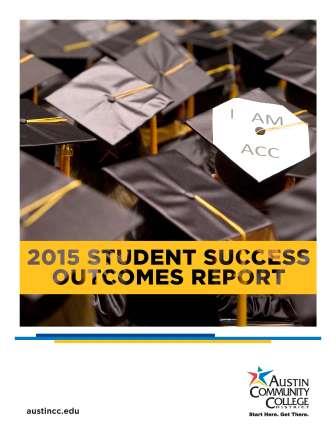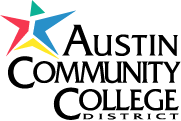 Persistence and completion rates for Austin Community College students have increased steadily in the past two years, while the number of students mandated to developmental education has declined.
Persistence and completion rates for Austin Community College students have increased steadily in the past two years, while the number of students mandated to developmental education has declined.
The results are among the data reported in a Student Success Outcomes Report (pdf) presented to ACC’s Board of Trustees at their work session December 14. ACC board policy calls for the college to annually report its progress in meeting the student success goals stated in the college’s mission and vision.
The report highlights ACC’s accomplishments in the four focus areas of Connection, Entry, Progress, and Completion and serves as a baseline for measuring accomplishments in several new initiatives.
“These data highlight the progress we’re making to close educational gaps and improve completion rates,” says ACC Provost Dr. Charles Cook. “They also show where we must strengthen our efforts to help students earn a credential that leads to employment or university transfer.”
Following are a few highlights in each focus area:
Connection
- Dual-credit enrollment increased 36 percent over five years. ACC is working with school district partners to transition more workforce courses to dual credit.
- The number of students earning their GED increased 40 percent to 488 in FY 2014 from 349 students in FY 2011.
- On average, more than 64 percent of ESL students improved their proficiency by one or more levels each year over the past five years.
Entry
- Preliminary fall 2015 enrollment figures suggest growth despite relatively high employment in the region.
- The percentage of first-time-in-college students requiring developmental courses in reading, writing, or mathematics decreased from fall 2010 to fall 2014, with developmental math experiencing a 14 percentage point decrease in the number of FTIC students.
Dr. Cook said the data related to connection and entry reflect ACC’s strong Adult Basic Education programs, and added that the developmental education outcomes not only indicate students are better prepared for college coursework, but that ACC is closing achievement gaps among ethnic groups.
Progress
- The full-time, credential-seeking FTIC student persistence and graduation rates increased across five cohorts. The number of students persisting through or graduating in their first spring increased 7 percent from fall 2010 to fall 2014, while the number of students persisting through or graduating in their second fall increased by 6 percent.
- Students successfully completing their first 15 credits increased 7 percent from FY 2013 to FY 2015.
Although persistence rates have increased there is room for improvement, Dr. Cook said, adding that the college must help students understand the value of achieving certain benchmarks or milestones, such as reaching 15 credit hours.
Completion
ACC’s graduation rate for full-time, credential-seeking FTIC students increased from 4 percent to 8 percent in the most recent three-year graduation rate data reported by IPEDs (Integrated Postsecondary Education Data System).
Meanwhile, degree, certificate, and other completions rose 71 percent overall from AY10 to AY15 (5,851 compared with 3,428). Specifically:
- Academic degrees increased 102 percent.
- Core curriculum/field of study completions rose 113 percent.
- Skills awards increased 87 percent.
Dr. Cook said while the increases are good news, the college must work to improve its degree and certificate completion rate. Redesigning programs and services for guided pathways will help more students complete what they start by making it easier for them to find the programs and coursework best suited to their goals and receive the help and support they need to stay on track to graduate.
The Student Success Outcomes Report can be accessed on the Office of Institutional Effectiveness and Accountability website.
Tags: completion rates, guided pathways, student success
Back to Top
